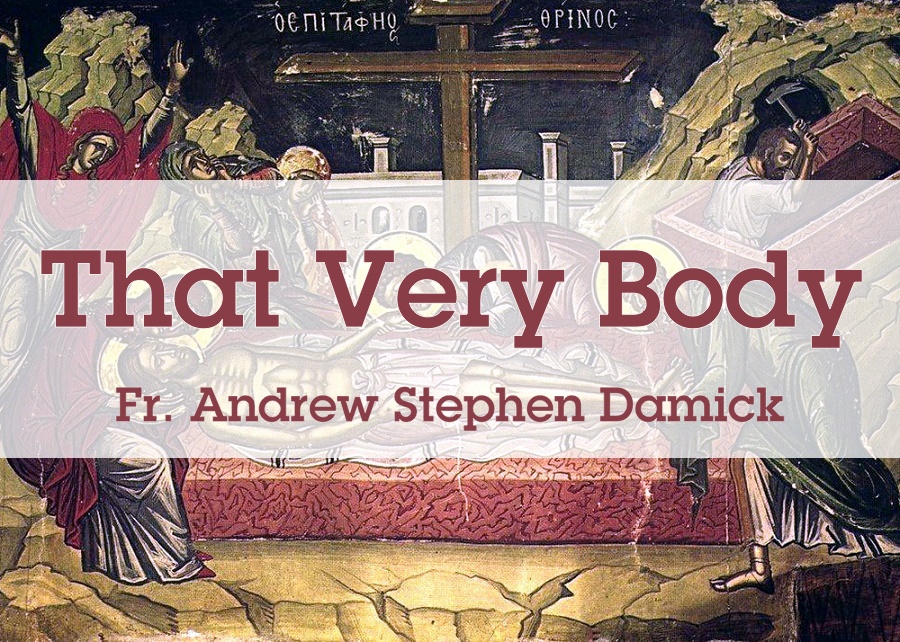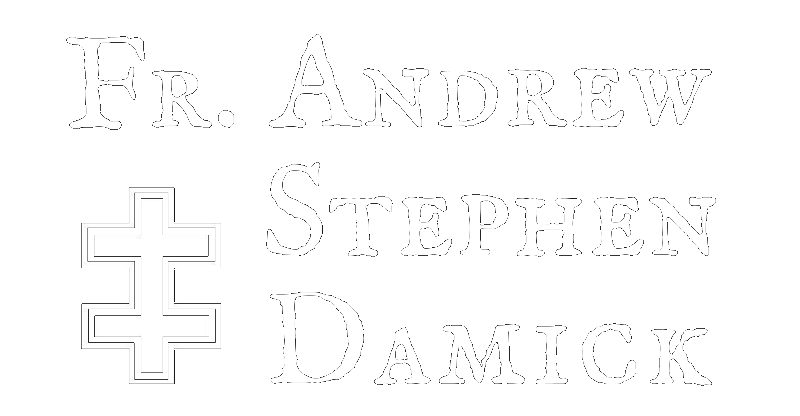
Sunday of the Myrrh-bearers, April 22, 2018
Acts 6:1-7; Mark 15:43-16:8
In the Name of the Father and of the Son and of the Holy Spirit, one God. Amen. Christ is risen!
On this third Sunday of Pascha, we are returned mystically to a series of events in Scripture which have to do with the body of the Lord Jesus. This is the Sunday of the Myrrh-bearers, but it is also the Sunday of Ss. Joseph of Arimathea and Nicodemus. All these people share this in common—that they attended to the body of the Lord.
Joseph and Nicodemus were two men who were outside Jesus’ circle of primary disciples but nonetheless in his greater circle of followers. In Nicodemus’s case in particular, he was a secret follower of the Messiah, having come to Jesus by night to inquire of Him what salvation meant and receiving from Him the teaching that we must be “born from above” or “born again” if we are to enter the Kingdom of Heaven.
So when Jesus died on the cross, out of their love for Him these two men took the initiative to ask the Roman governor Pontius Pilate for His body, so that they might bury Him with respect and reverence. The body is granted to them, and they wrapped Him in a costly linen shroud and placed Him in a new tomb hewn out of rock, the tomb that Joseph had prepared for himself. And a great stone was rolled in front of the tomb. It is then noted that two of the women who followed Jesus saw the place where He had been laid.
After the Sabbath was past, the Jewish day of rest, these women along with some others went back to the tomb on the first day of the week, bringing with them spices and burial ointment—precious myrrh for the traditional preparation of a body. As they walked to the tomb, they asked each other, “Who will roll away the stone for us from the door of the tomb?”
And when they got there, they saw that the stone had been rolled back already. And there they were, with their myrrh and spices in their hands, and they saw what the Scripture describes as “a young man sitting on the right side, dressed in a white robe.” They were amazed, but he spoke to them and told them not to be amazed. He told them that the Lord Jesus had risen from the dead, just as He had said. And he told them to go tell Peter and the disciples what they had seen. And he also told them that they would see the risen Jesus for themselves.
He was of course an angel.
So why do we hear this Gospel? Why is it that all four Evangelists write about the reception and burial of the body by Joseph and Nicodemus, as well as the coming to the tomb of the Myrrh-bearing women, expecting to find the body and to anoint it? Why all these details of what might be considered funeral practices?
We know that there were many details of Jesus’ life and ministry that are not mentioned in the Gospels, so many that John imagines that the world itself could not contain the books that would need to be written to take it all down (John 21:25). So that means that all four Evangelists decided that these details had to be included, that these details were critical so that we might believe that Jesus Christ is the Son of God and that we might have life in His name (John 20:31).
So what’s going on here?
One of the key questions that concerned early Christians was proclaiming to the world Who Jesus Christ is. He is both God and man, fully divine and fully human, two natures in one Person. But it is one thing simply to proclaim that theological definition, and yet another to demonstrate it through specific illustrations.
If you know about the history of early theological controversies, you know that almost no one who believed in Jesus denied that He was God. It was clear that He was divine, that He had come from God. But there was a controversy about His identity, and it was focused on His other nature, His human nature.
In particular, the earliest heretics of this sort said that He was divine, yes, but that He only appeared to be human. These heretics were called Docetists, a term that came from the Greek word meaning “appear.” So they would say that His humanity was only apparent, that it was a kind of illusion that He adopted to help us relate to Him better.
But here we have these accounts from the Gospels. Joseph and Nicodemus ask for a body. They wrap a body in linen. They bury a body. And the Myrrh-bearers go to anoint a body. They bring spices and myrrh to undertake a very physical, very earthy action—preparing a body for burial.
All this is to illustrate that the humanity of Jesus was just as human, just as real, just as earthy as the humanity of you and me. He is fully human, which means He has a human body, with all that that means. He got hungry, He got thirsty, He got tired, He slept, He felt pain, and He died. And He was buried.
But that is not all.
In the account especially of the Myrrh-bearers, we see them come to the tomb, and it is empty. Why is that an important detail for illustrating His humanity? Well, there are some people who may believe that Jesus rose from the dead only in a “spiritual” sense, that perhaps His soul arose in some way but that His human body is no longer in the picture.
Yet here we are with these women, and the tomb is opened. The stone is rolled back. And later in the story, some people even go inside. And what do they see? The body is gone. Why is it gone? It is because that very human body, the very body of the Lord Jesus, the Son of God, that very body in whose veins the blood had stopped pumping, that very body in whose lungs the air had stopped filling, that very body in whose eyes the light had gone out—it was in that very body that the Messiah had risen from the dead. It was in that body that He had lived, and it was in that body that He had died. And it was in that body that He rose from the dead!
And when He ascended into Heaven, it is in that same body that He sat down at the right hand of the Father.
Why does this matter for us? It is because we will all be raised like Him. We will all be raised in these very bodies we now have, although their imperfections and brokenness will all be healed. The Lord’s resurrection is bodily. It is human. It is earthy. It is physical. It is not some ethereal experience that is somehow spiritual but not bodily. It is a bodily resurrection! And we, too, will be raised in a bodily resurrection.
Our Lord and Savior Jesus Christ, the God-man Himself, did not come among us as a phantom, an illusion Who appeared to be human but was not really. He came among us and took on our humanity in its fullness—a human body, a human mind, a human soul, human emotions, and so on. And this humanity is now the humanity of the Son of God Himself.
And it was not a temporary arrangement. If it were, then our own resurrections would also be temporary. No, it is permanent. And our resurrection will likewise be permanent. And thus the manner in which we are raised—whether to everlasting life or to everlasting judgement—will also be permanent.
This is why we proclaim that Christ is risen! This is why we are filled with joy at this awesome feast! This is why we declare to each other, to our homes, to our cities, and to the whole world that Jesus Christ is risen from the dead, trampling down death by death, and that we who are in spiritual tombs and someday earthly ones—upon us is life being bestowed.
To the truly risen Lord Jesus Christ, with His Father and the Holy Spirit, be all glory, honor and worship, now and ever, and unto ages of ages. Amen. Christ is risen!
